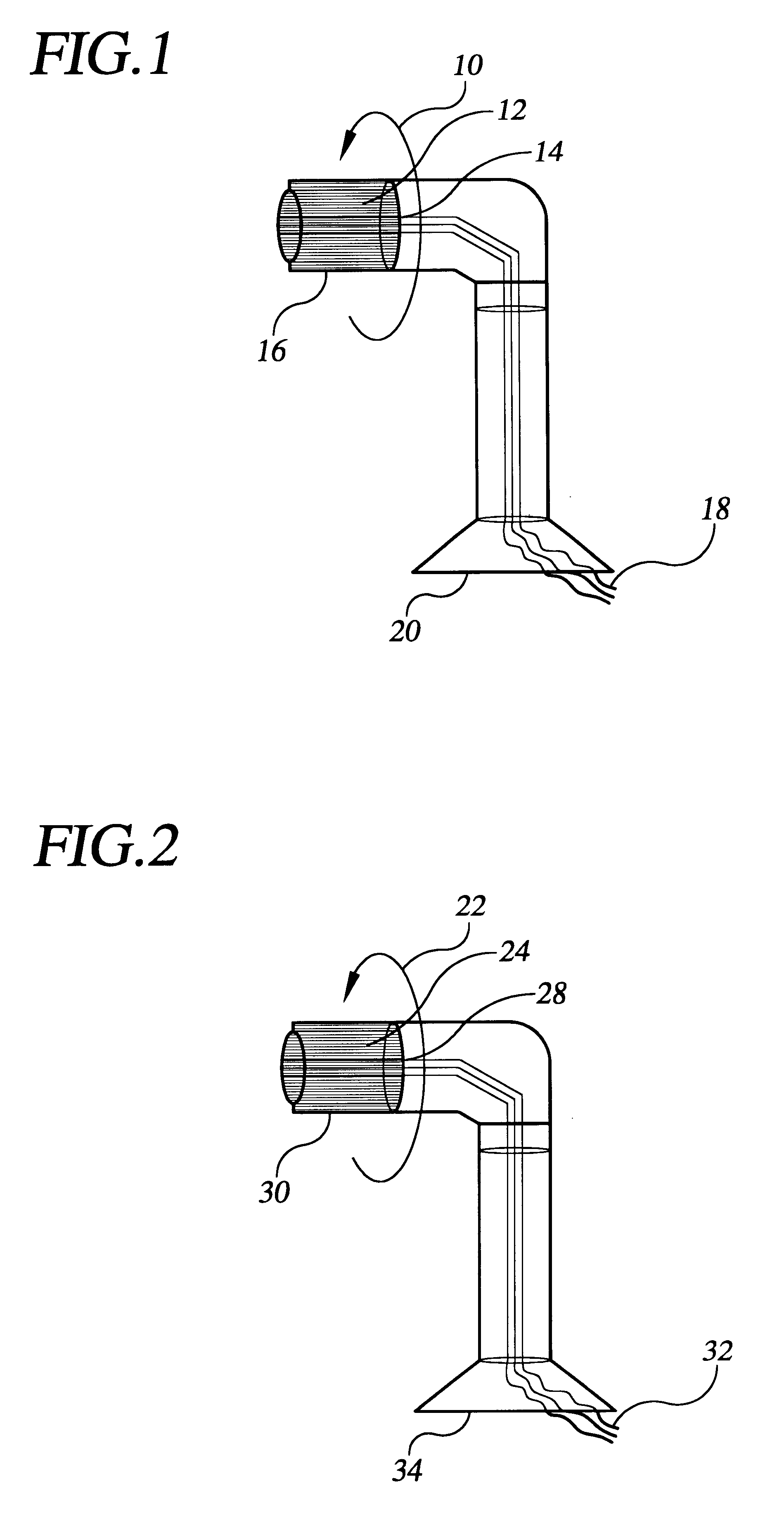Method and tools for oral hygiene
a technology of oral hygiene and tools, applied in the field of at-home tooth cleaning, can solve the problems of reducing the effectiveness of cleaning process, and reducing the effectiveness of cleaning process, and achieve the effect of significant destructive effect and safe self-treatmen
- Summary
- Abstract
- Description
- Claims
- Application Information
AI Technical Summary
Benefits of technology
Problems solved by technology
Method used
Image
Examples
example # 2
EXAMPLE #2
A dental device is designed in accordance with FIG. 2. The embodiment is similar to FIG. 1, except that a laser source 32 is used in place of a lamp or diode as a radiation source. The laser transmits from outlet 28, in the middle of rotating brush-head 22, and around or adjacent to water source 32. The laser provided by source 32 is transported to the mouth by way of the water jet, using the total reflection method, or by way of a separate fiber. The separate bristles 24 may also act as fiberoptic threads that transmit the laser. The water source could also encircle the light source. Oral hygiene composition is applied in similar terms to Example 1. Laser source 32 is activated and teeth are cleaned similar to Example 1. Laser source 32, fibers and outlet 28 are independent, removable components of the device to ensure ease of replacement. Longer bristles 30 ensure adequate cleaning in the interdental spaces. In this embodiment, bristles acting as fiberoptic transmitters ...
example # 3
EXAMPLE #3
A dental device or light source is designed in accordance with FIG. 3. Source 44 provides power to the diode, laser, or light source 40. Plastic body 42 is pliable, has joints, or employs other means to ensure maneuverability and access to all areas of the oral cavity. Oral hygiene composition is applied by use of a conventional toothbrush or other means. Light source 40 is then activated, which initiates the photosensitive agent. User then employs a conventional toothbrush or other means to clean teeth and move away residue from teeth and the remainder of the oral cavity. The light source 40 in FIG. 3 is also removable to ensure cost-efficient replacement in the event of normal wear and tear.
PUM
| Property | Measurement | Unit |
|---|---|---|
| wavelengths | aaaaa | aaaaa |
| wavelengths | aaaaa | aaaaa |
| visible wavelengths | aaaaa | aaaaa |
Abstract
Description
Claims
Application Information
 Login to View More
Login to View More - R&D
- Intellectual Property
- Life Sciences
- Materials
- Tech Scout
- Unparalleled Data Quality
- Higher Quality Content
- 60% Fewer Hallucinations
Browse by: Latest US Patents, China's latest patents, Technical Efficacy Thesaurus, Application Domain, Technology Topic, Popular Technical Reports.
© 2025 PatSnap. All rights reserved.Legal|Privacy policy|Modern Slavery Act Transparency Statement|Sitemap|About US| Contact US: help@patsnap.com



